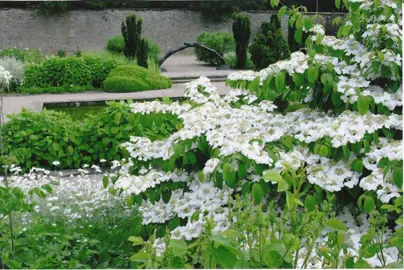
The Plant Company grows, sells, and ships Pinus trees throughout NZ. We pride ourselves on producing high quality plants and seeing the joy from our customers when they receive them. We do hope you enjoy them and support this NZ business that is passionate about Pinus trees.
Commonly known as the Pine Nut, this is an attractive tree that has a variety of uses including the production of nuts. It grows with an upright and...
Commonly known as the Dwarf Mountain Pine, this is a small, alpine tree. It produces short, dark green needles which are held densely off upright...
Pinus radiata is a very large tree commonly grown for timber production. It produces long, dark green needles held off solid branches. This evergreen...
Pinus radiata “Aurea” is a small conifer that features bright foliage. It produces long, yellow-green needles on solid branches. It typically grows...
Growing colourful trees in your garden delivers a vast range of benefits:
We have the largest variety of Pine and Pinenut trees and the right one for your space. Our Pinus trees have been selected to thrive in NZ’s climate. We grow and stock only the highest quality plants, sourcing them locally, and from NZ’s leading nurseries. Each plant is packed and transported with extreme care, ensuring it arrives to you in the same condition it was in when it left the nursery. If you are wanting to buy Pinus, shop with confidence from the best in the industry.
1. What are some points about Pinus?
Some points about Pinus, the genus of pine trees:
Distribution and Diversity:
Physical Characteristics:
Ecological Significance:
Economic Importance:
Symbolism and Cultural Significance:
These are just a few points about the fascinating genus of Pinus. Pine trees continue to play a significant role in our environment, our economy, and our cultural heritage.
2. What are the types of Pinus?
The genus Pinus is a diverse group of coniferous trees with over 150 species native to various regions across the Northern Hemisphere. They are classified into two subgenera based on the number of fibrovascular bundles in the needle:
Subgenus Pinus (Hard Pines)
Hard pines have two or three needles per fascicle and harder wood. They are typically found in temperate and boreal forests. Some common species of hard pines include:
Subgenus Strobus (Soft Pines)
Soft pines have five needles per fascicle and softer wood. They are typically found in cooler climates, such as mountainous regions and coastal areas. Some common species of soft pines include:
Additional Pine Species:
In addition to the two main subgenera, there are a few other groups of pine trees that are sometimes classified separately:
Pine trees are a diverse and fascinating group of plants with a wide range of characteristics and adaptations. They play an important role in our environment, our economy, and our cultural heritage.
3. What is the habit of Pinus?
The most common habit or growth form of Pinus trees is excurrent, where the main stem or leader continues to grow upwards, giving the tree a pyramidal or conical shape. This growth pattern is due to the apical dominance of the terminal bud, which suppresses the growth of lateral branches near the top of the tree. The excurrent habit allows Pinus trees to reach great heights and compete for sunlight in dense forest canopies.
Some Pinus species exhibit a decumbent or prostrate habit, where the main stem grows horizontally along the ground or slopes upwards only slightly. These forms are often found in harsh environments, such as high altitudes, rocky outcrops, or poor soils, where upward growth is limited. The decumbent or prostrate habit allows the tree to spread and cover a larger area, providing better anchorage and access to nutrients and moisture. Additionally, some Pinus species, particularly those in the Pinyon pine group, exhibit a shrub-like habit, with multiple stems branching from the base and forming a bushy or rounded shape. This growth form is often found in arid or semi-arid regions, where water resources are limited. The shrub-like habit allows the tree to conserve moisture and adapt to the harsh conditions.
4. How tall do Pinus grow?
The height of Pinus trees varies considerably depending on the species, environmental conditions, and age. Some species, such as the lodgepole pine (Pinus contorta), typically reach heights of 20 to 80 feet (6 to 24 metres), while others, such as the ponderosa pine (Pinus ponderosa), can grow to be over 300 feet (90 meters) tall. The tallest known Pinus tree, a ponderosa pine in southern Oregon, measures an impressive 280 feet (85 meters) tall.
Several factors influence the height of Pinus trees:
In general, Pinus trees are known for their impressive height and can dominate forest canopies. Their ability to reach great heights is a testament to their adaptability and resilience in various environmental conditions.
5. At what age does Pines stop growing?
The age at which Pinus trees stop growing varies depending on the species and environmental conditions. However, most Pinus species continue to grow in height and width for several hundred years, with some individuals living for over 1,000 years. The rate of growth slows down significantly as the tree matures, but it doesn't completely stop.
Here's a general overview of how Pinus tree growth progresses over time:
The specific age at which Pinus trees stop growing depends on the species and environmental factors. For instance, lodgepole pines typically stop growing in height around 100 to 150 years of age, while ponderosa pines may continue to grow for 200 to 300 years or more.
Whether you need assistance finding the plant you’re looking for or you simply want to know more about who we are and what we do, we invite you to get in touch with us today. A member of The Plant Company team will get back in touch as soon as possible.


